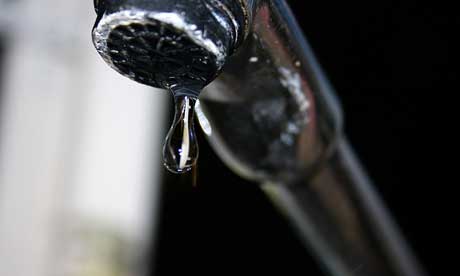
Local drinking water isn’t always the microbe soup that some imagine. We look at the most common travel scenarios and how best to drink through them
Q: I’m planning a mountain trek and am likely to be drinking from streams. What things could be in the water and how do I avoid them?
A: Parasites thrive by producing millions of eggs or cysts that are hard to kill. The important cyst-forming protozoa are entamoeba (which cause amoebic dysentery), giardia, cyclospora, and cryptosporidium. Chlorine is unlikely to kill them; boiling or filtering is most effective.
During heavy rains, cyst-formers and eggs can be washed into watercourses. Take a stove to boil water – heating it to 65ºC kills most microbes (a rolling boil at any altitude is enough to make water safe). Pack iodine as your back-up.
Q: When travelling in the desert, what should I be aware of?
A: Worm eggs are resistant to hostile, dry environments and are small enough to blow around, so beware of drinking from uncovered water sources. Filtration is a good back-up.
Q: I’m going on a year-long RTW trip and will encounter all sorts of water sources. What’s my best option?
A: Bacteria are the commonest provokers of gastrointestinal illness, and these are mostly acquired through poor food hygiene and handling. Two bacteria that may contaminate drinking water are cholera and typhoid. Both are killed by chemical treatments including iodine and chlorine. Filter systems with pore sizes of 0.4 microns or less will remove these bacteria but not viruses. Filtration or chemicals will remove or neutralise all significant bacteria, but I’d rely on the versatile method of boiling; where boiling is impractical use a chemical back-up.
The cheapest and best chemical purifying agent is iodine (preferable to chlorine and silver because it kills amoebic cysts and hepatitis virus). If using it long term – more than a few months – it is best to vary your sources of safe drinks (use boiled water too). Adding vitamin C after the 30-minute sterilisation time is complete makes iodine-treated water more palatable. Silver-based sterilising tablets are tasteless and have a long shelf life but are less effective than iodine and chlorine.
Q: What precautions should I take in a city?
A: Your destination influences how careful you need to be; developing countries and the former Soviet Union require most care. Using a filter in a restaurant can be embarrassing or insult the owners, so order hot drinks, soda or drop iodine into the tap water. In developing countries, efforts are made to ensure town water supplies are as pure as possible, but what arrives in the taps isn’t necessarily safe.
In Kathmandu, for example, drinking water is chlorinated at source but then enters a distribution system that supplies water intermittently. The off-on supply creates suction in the pipes, drawing contaminants in from the groundwater.
Most gastrointestinal diseases come via contaminated food so avoid salads, ice cream, ice cubes and foods that might have been frozen or improperly reheated.
Q: What if I have no choice but to drink the local water?
A: Seek out a hand-pump – shallow groundwater is nearly always safe. If this isn’t possible, filter the water through several layers of clean cloth.
Q: Can I catch anything by swimming in lakes or the sea?
A: There are a host of nasty microbes queuing up to colonise humans, but the water-borne viruses travellers need to be most aware of are hepatitis A and E, which can be acquired from swallowing contaminated water while swimming. There is an excellent vaccine against hepatitis A and there is a hepatitis E vaccine in development.
Other viruses that can contaminate water include Norwalk and the increasingly rare but highly dangerous poliomyelitis, but precautions that exclude hepatitis will also protect from these. There is no treatment for these viral infections once you get them so try to avoid highly contaminated waters and be as fully immunised as possible. Adventurers can catch leptospirosis from contact with highly contaminated water – even in Britain – and in Africa bathers must find out about the risk of schistosomiasis (bilharzia) before plunging in.
Q: Is bottled mineral water safe everywhere?
A: Bottled water may come from a spring or may be treated (or untreated) tap water. Dissolved ‘salts’ such as magnesium in true mineral (spring) water can loosen the bowels a little in those not used to it, but this will not harm you. More importantly, any bottled water can contain microbes and is on occasion contaminated with noxious chemicals. Discarded bottles are also causing disposal problems in many regions so it is best for you and the environment to take other safe drinks such as hot lemon, tea and soups.
Dr Jane Wilson-Howarth travels with a metal Sigg bottle and iodine drops. There are lots more tips and details in her guide Bugs Bites & Bowels (Cadogan, 2006)